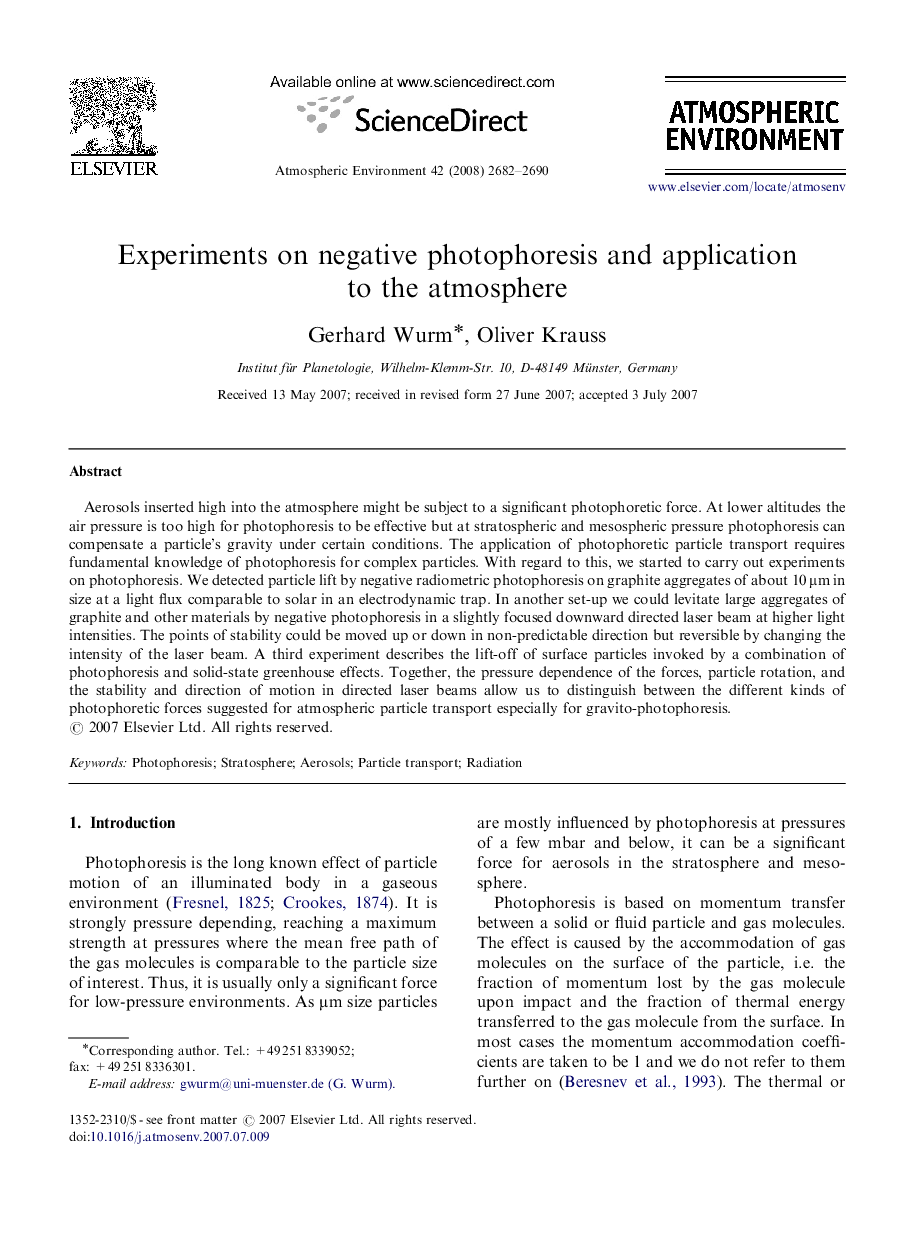| Article ID | Journal | Published Year | Pages | File Type |
|---|---|---|---|---|
| 4442837 | Atmospheric Environment | 2008 | 9 Pages |
Aerosols inserted high into the atmosphere might be subject to a significant photophoretic force. At lower altitudes the air pressure is too high for photophoresis to be effective but at stratospheric and mesospheric pressure photophoresis can compensate a particle's gravity under certain conditions. The application of photophoretic particle transport requires fundamental knowledge of photophoresis for complex particles. With regard to this, we started to carry out experiments on photophoresis. We detected particle lift by negative radiometric photophoresis on graphite aggregates of about 10 μm in size at a light flux comparable to solar in an electrodynamic trap. In another set-up we could levitate large aggregates of graphite and other materials by negative photophoresis in a slightly focused downward directed laser beam at higher light intensities. The points of stability could be moved up or down in non-predictable direction but reversible by changing the intensity of the laser beam. A third experiment describes the lift-off of surface particles invoked by a combination of photophoresis and solid-state greenhouse effects. Together, the pressure dependence of the forces, particle rotation, and the stability and direction of motion in directed laser beams allow us to distinguish between the different kinds of photophoretic forces suggested for atmospheric particle transport especially for gravito-photophoresis.
